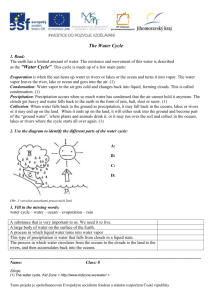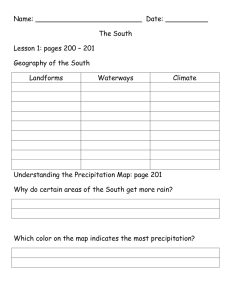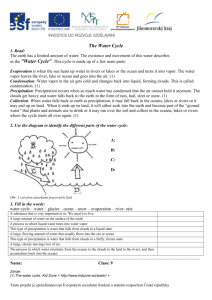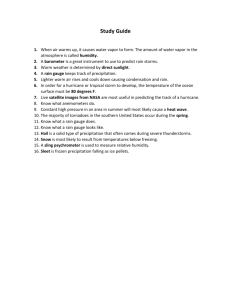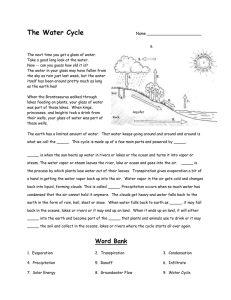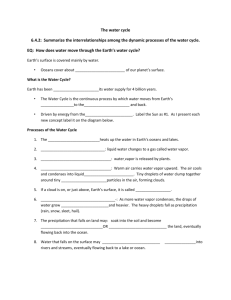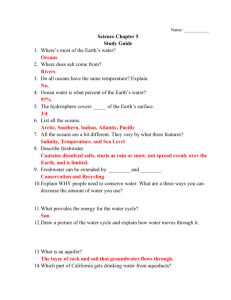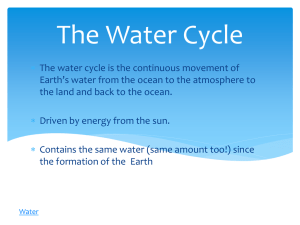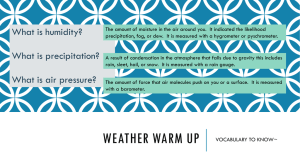The Water Cycle
advertisement
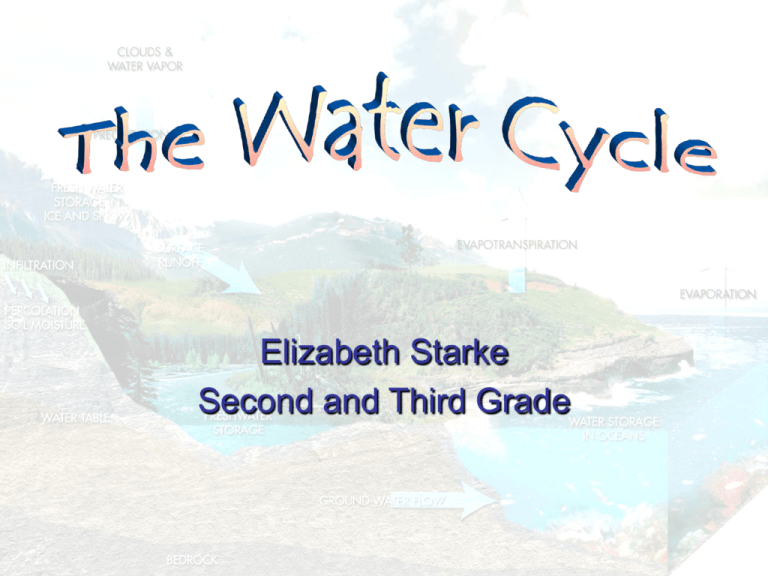
Elizabeth Starke Second and Third Grade Can You Answer These Questions? Where does the rain come from? Where does the rain go? How come we never get any “new water”? It may be hard to believe but the water that we see and use today has been around as long as the earth has. Just think about it… The water in your cup was here with the dinosaurs!!! Let’s find out how this happens… The Water Cycle The water cycle is the continuous movement of water from the Earth’s water (oceans, lakes, rivers etc.) to the air and land then back to the water in a cyclical pattern. Evaporation Evaporation occurs when the sun heats the Earth’s surface water causing it to evaporate, turning it into vapor (gas). Condensation Condensation is when water, in vapor form condenses back into water droplets and creates clouds. The more water vapor that collects the bigger and darker the cloud. Precipitation Precipitation is when the droplets of water that have formed the clouds come together and grow until they become too heavy and to the earth. Precipitation can be in the form of rain, mist, hail, snow or sleet. Collection When water falls back to earth as precipitation, it may fall back in the oceans, lakes or rivers or it may end up on land. When the water ends up on land it will runoff from the land to rivers and streams which will eventually return it to the lakes and oceans. Build your own Water Cycle YOU WILL NEED: 1. jar 2. plants 3. bottle cap or shell of water 4. soil 5. sand 6. small rocks DIRECTIONS: 1. Fill jar as in the picture and put the lid on 2. Put the jar in a sunny place. 3. See how the water cycle works. Activities and Books to Enjoy Play the Water Cycle Game Cloudy with a Chance of Meatballs By Judi Barrett Take a trivia trip Through the water cycle The Cloud Book By: Tomie de Paola Crazy Weather Facts Record Precipitation – On November 26, 1970 more than 1.5 inches of rain fell I only one minute in Barst, Guadeloupe. – The Atacama Desert in Chile is the driest place on earth. It has annual rainfall of 4/1000 of an inch (just a few drops). In 1971, this region probably had it’s first rainfall in 400 years! Silly Facts – In Montreal, in 1857, it rained lizards! – Red and silver maples and poplar trees know hen it is going to rain… they turn their leaves up. – In 1946 it rained frogs in Memphis, Tennessee. Works Cited http://www.danbury.k12.ct.us/elemweb/weatherwe b/vocabulary.html http://www.urbanrivers.org/web_images/epa_water _cycle.gif Scholastic Atlas of Weather – Editor in Chief- Martine Podesto – Scholastic Inc., New York, 2004 Weather – Diane Williams – Teacher Created Manuals Inc., Westminster CA, 1994
